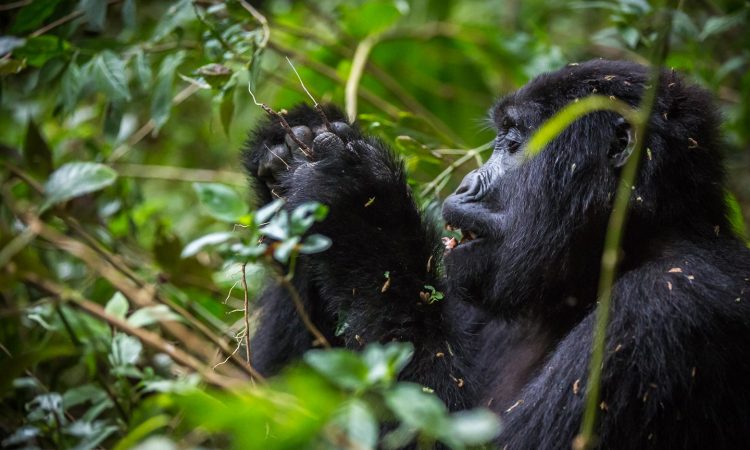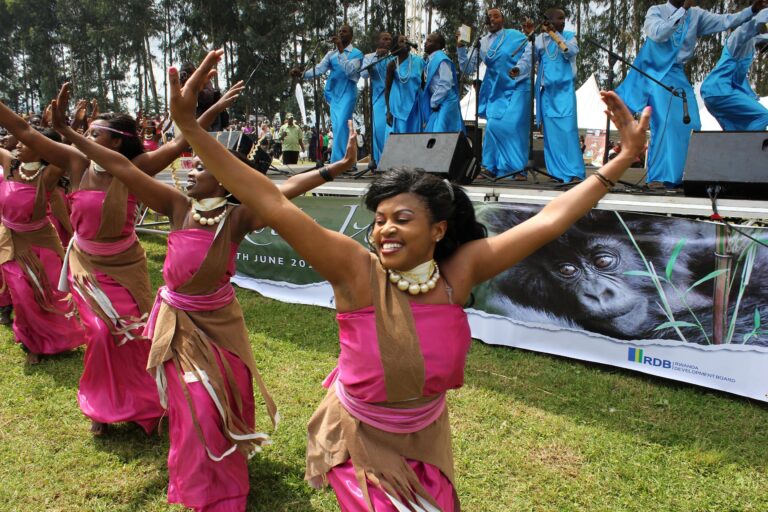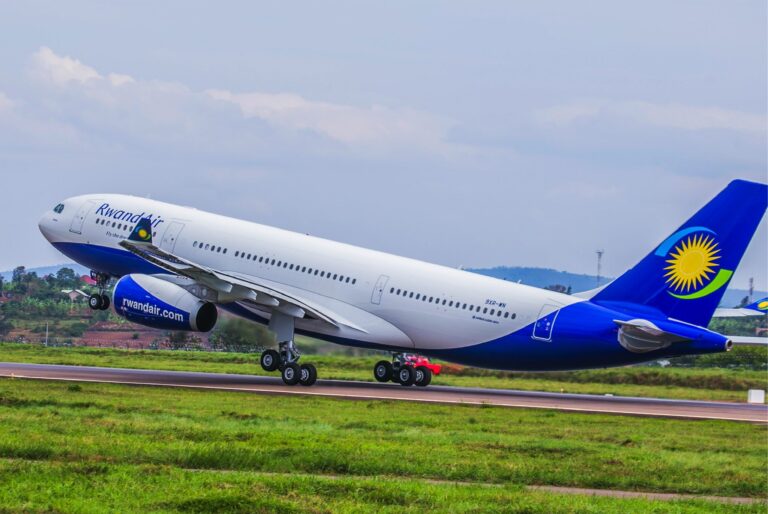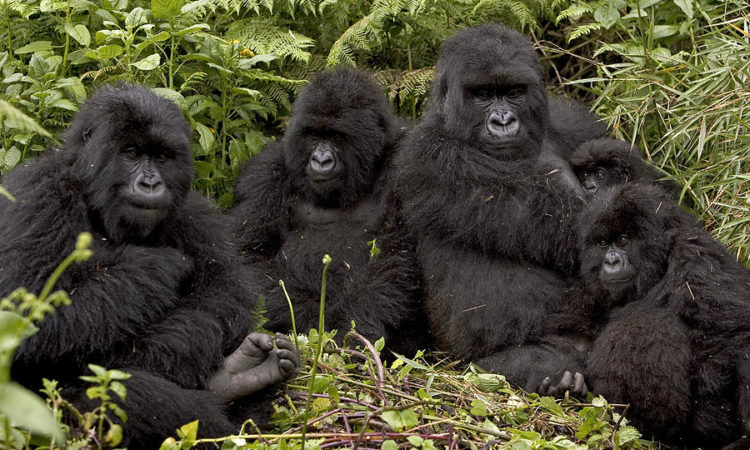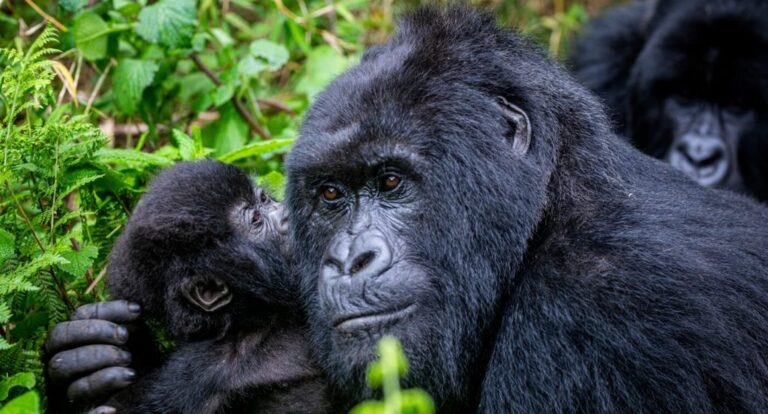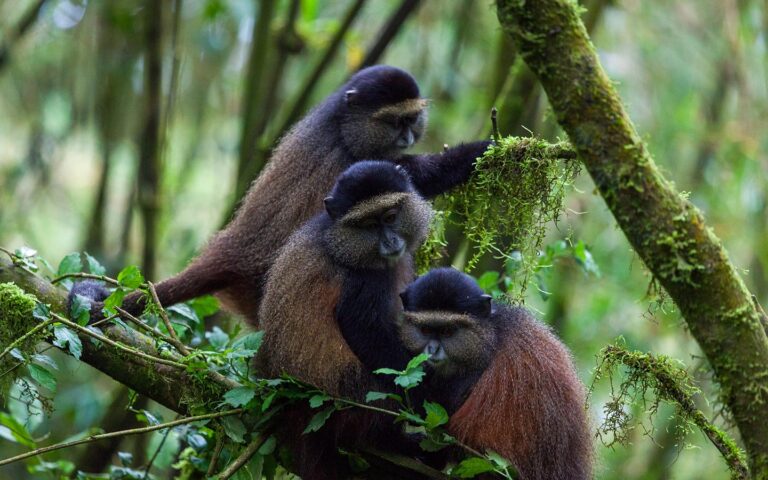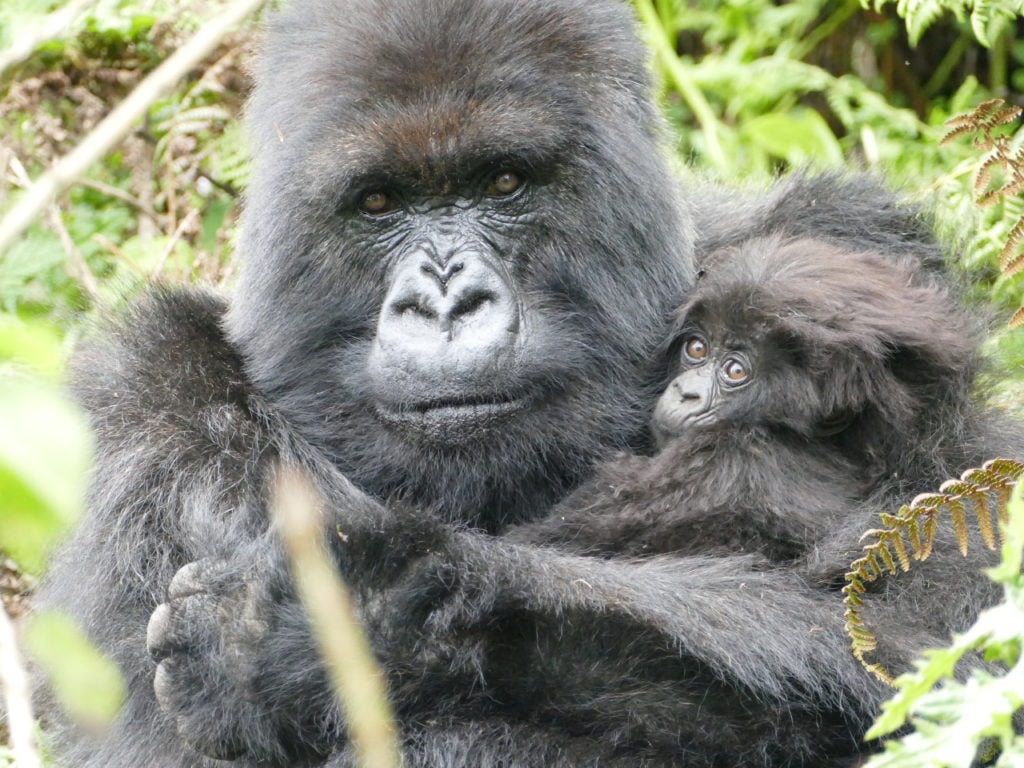
A 42 year old Poppy features not only as the oldest mountain gorilla that Dian Fossey Fund has observed in Volcanoes National Park but she is also one of the first Great Apes that Dian Fossey conducted her research at a time when she was in Rwanda. Unlike most apes and other wild creatures, Poppy is credited for her ability to deliver even at her mature age. Poppy was born in a family where Dian Fossey carried out her research in 1976. The group was famous as ‘Group five’ and Poppy also lived in the same family till November 1985. It was till the Dian Fossey’s mysterious death that Poppy had to relocate to the Susa family that also features as one of the troops that was and still observed by Rwandan Park Authorities and the staff of Dian Fossey Fund. When she matured, Poppy became a dominant female gorilla of all the group members and gave birth to the largest number of infants in Volcanoes National Park.
Around July 2015, given the stressful events that occurred at a time in Poppy’s family, she was sighted in Iyambere’s troop that was also monitored by a group of Dian Fossey Fund. Iyambere family was headed by Iyambere silverback gorilla and this troop is one of the smallest groups with only 5 (five) individuals. It was established in 2015 by Iyambere silverback gorilla at the age of 14 years and 2 (two) of his 3 (three) females, Poppy and Izuru. In gorilla habitat, it is something unusual for old female mountain gorillas to change families but it happened with mother poppy making her one of the rarest female gorillas in Volcanoes National Park.
While this female gorilla is known for her own history, the amazing part of her life is that on 1st December 2017, Poppy once again broke news with her newly born infant. What is interesting is that, she remained strong despite the current loss, feeding massively to compensate the lost energy while pregnant and at a time of giving birth. Her baby is usually spotted with the rest of mother gorillas and their babies something that is building a strong bond among these creatures. The bond between these apes is complete especially for the 4 years that the babies have existed and the mother gorilla’ care is equally like that of humans. This elder mother gorilla has elder baby born on 1st April, 1976.
Poppy lived in the Susa family for several years as it expanded and gradually developed. However, around 2009 the family began to break off something that made Poppy to transfer with 2 (two) of its offshoots but later came back to the Susa family. Like humans, the newly born baby gorillas absolutely depend for full care especially in their first years. Mother gorillas and their babies consequently look at one another in affectionate manner and the mother pays keen attention even when her young one starts taking its first few steps off the mother’s arms. Poppy features among the very few most experienced mother mountain gorillas and above all she is a grandmother too. The 5 (five) of her infants have grown up and today, they thrive in various gorilla families and she remained in a historic line of apes that were named before her mother-Effie. Unfortunately, she disappeared from the tracking area around 2015 when she was 35 years and she has never been got and this makes Poppy the last of Effie’s thriving babies. Effie’s descendants are today widely distributed in most of the families that thrive within the Virunga Massifs and they are famous for the shared characteristics like dominant personalities and facial similarities. Poppy’s younger sister was monitored, at first by Dian Fossey herself and later by staff of Dian Fossey Fund.
In conclusion, newly born gorillas are amazingly a great achievement not only to conservationists and travelers but also good news to the gorilla family. Their increase in the wilderness in a long run helps to boost visitors’ experiences and the tourism sector at large. There is still need for more conservation efforts to ensure that these critically endangered apes are protected and that they thrive for longer period of time.

